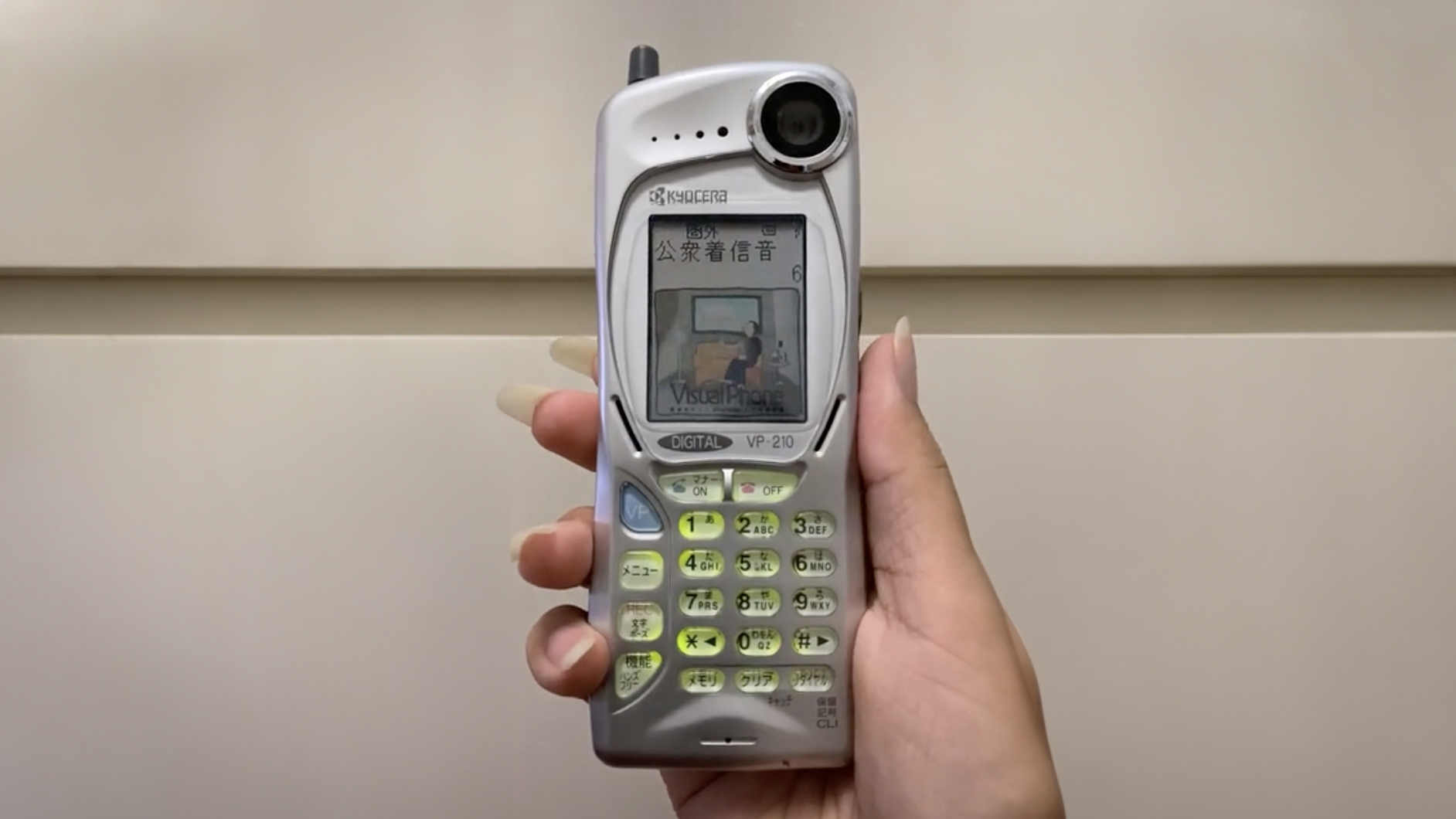26 years old! First ever camera phone had a 0.11MP sensor, could only take 20 photos
1999 saw the first ever camera phone, with a mighty 0.11MP sensor and a maximum 20-image storage capacity!

Next month will see the 26th birthday of the first ever camera phone: a marvel of 1999 technology with a 0.11MP sensor, and the ability to store a maximum of 20 photos, for around $325 (which is approximately $608 / £488 / AU$948 today).
While Samsung is quick to lay claim to having made the first camera phone (the Samsung SCH-V200, with a 0.35MP sensor and the same 20-picture limit), it actually didn't launch until June 2000. Instead it's the Kyocera Corporation in Japan that holds the honor, with the Kyocera VisualPhone VP-210 – launched in May 1999.
For historical context, that was the year Bill Clinton was impeached and acquitted, Michael Jordan retired a second time, Eminem released The Slim Shady LP, Serena Williams won her first Grand Slam, and we saw the debuts of Star Wars: Episode One, The Matrix, Spongebob Squarepants, Family Guy and The Sopranos.
For photographic context, 1999 saw the introduction of the entry-level Canon EOS 300 film camera (with a 7-zone autofocus system and 1.5fps burst rate) and Nikon's first ever DSLR, the Nikon D1 (which was also the first ever camera to shoot JPEGs, with its 2.7MP sensor).
It's this environment into which the Kyocera VisualPhone VP-210 was launched. Reported at the time as being "the world's first mobile videophone", the VP-210's whopping 110,000-pixel selfie camera was paired with a 2-inch color TFT screen to make it possible for video calls on the go. You can see the phone in action in the video below:
I don't think anyone who wasn't around at that time can really appreciate the attitude towards video calls back in 1999. They simply were not a thing – most people didn't even have a cell phone. Heck, phones that did video were landline-only, and still being referred to as 'videophones' – a term that doesn't even exist today. CNN described the public attitude best, in its report on the VP-210:
"Videophones are nothing new. They are telephones with built-in cameras that can transmit choppy video images making phone conversations something of a dress-up affair."
Get the Digital Camera World Newsletter
The best camera deals, reviews, product advice, and unmissable photography news, direct to your inbox!
The communication infrastructure wasn't really there, either. Kyocera's phone could transmit and receive images at about 2fps, making for extremely stuttery video. Or of course, it could send 0.11MP still photos via email – the ability to send picture texts via MMS wouldn't arrive until 2002, and WhatsApp wouldn't be here until 2009, and there was no AirDrop until 2013.
"Users can use this phone not only to talk visually to their counterparts, but also they will be able to use it for business purposes," said Kyocera's Hajime Kimura, in proposing use cases for the phone and video calls.
"For example, if a constructor brings this phone to a site under construction, he can show what the site is like to the people at headquarters using this phone. So, they can do business checking the situation at real time."
Kyocera actually produced film and digital cameras up until 2005, some under the Yashica and Contax brands. It is still going strong today – and apparently it really believed in the use of phones for the construction industry, as its mobile aspirations have swung towards rugged phones.

You might be interested in the best iPhones for photography, or perhaps the best Samsung phones or the best Android phone for photography from all manufacturers.

James has 22 years experience as a journalist, serving as editor of Digital Camera World for 6 of them. He started working in the photography industry in 2014, product testing and shooting ad campaigns for Olympus, as well as clients like Aston Martin Racing, Elinchrom and L'Oréal. An Olympus / OM System, Canon and Hasselblad shooter, he has a wealth of knowledge on cameras of all makes – and he loves instant cameras, too.

